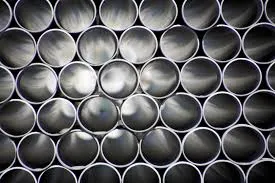
-
 Afrikaans
Afrikaans -
 Albanian
Albanian -
 Amharic
Amharic -
 Arabic
Arabic -
 Armenian
Armenian -
 Azerbaijani
Azerbaijani -
 Basque
Basque -
 Belarusian
Belarusian -
 Bengali
Bengali -
 Bosnian
Bosnian -
 Bulgarian
Bulgarian -
 Catalan
Catalan -
 Cebuano
Cebuano -
 China
China -
 China (Taiwan)
China (Taiwan) -
 Corsican
Corsican -
 Croatian
Croatian -
 Czech
Czech -
 Danish
Danish -
 Dutch
Dutch -
 English
English -
 Esperanto
Esperanto -
 Estonian
Estonian -
 Finnish
Finnish -
 French
French -
 Frisian
Frisian -
 Galician
Galician -
 Georgian
Georgian -
 German
German -
 Greek
Greek -
 Gujarati
Gujarati -
 Haitian Creole
Haitian Creole -
 hausa
hausa -
 hawaiian
hawaiian -
 Hebrew
Hebrew -
 Hindi
Hindi -
 Miao
Miao -
 Hungarian
Hungarian -
 Icelandic
Icelandic -
 igbo
igbo -
 Indonesian
Indonesian -
 irish
irish -
 Italian
Italian -
 Japanese
Japanese -
 Javanese
Javanese -
 Kannada
Kannada -
 kazakh
kazakh -
 Khmer
Khmer -
 Rwandese
Rwandese -
 Korean
Korean -
 Kurdish
Kurdish -
 Kyrgyz
Kyrgyz -
 Lao
Lao -
 Latin
Latin -
 Latvian
Latvian -
 Lithuanian
Lithuanian -
 Luxembourgish
Luxembourgish -
 Macedonian
Macedonian -
 Malgashi
Malgashi -
 Malay
Malay -
 Malayalam
Malayalam -
 Maltese
Maltese -
 Maori
Maori -
 Marathi
Marathi -
 Mongolian
Mongolian -
 Myanmar
Myanmar -
 Nepali
Nepali -
 Norwegian
Norwegian -
 Norwegian
Norwegian -
 Occitan
Occitan -
 Pashto
Pashto -
 Persian
Persian -
 Polish
Polish -
 Portuguese
Portuguese -
 Punjabi
Punjabi -
 Romanian
Romanian -
 Russian
Russian -
 Samoan
Samoan -
 Scottish Gaelic
Scottish Gaelic -
 Serbian
Serbian -
 Sesotho
Sesotho -
 Shona
Shona -
 Sindhi
Sindhi -
 Sinhala
Sinhala -
 Slovak
Slovak -
 Slovenian
Slovenian -
 Somali
Somali -
 Spanish
Spanish -
 Sundanese
Sundanese -
 Swahili
Swahili -
 Swedish
Swedish -
 Tagalog
Tagalog -
 Tajik
Tajik -
 Tamil
Tamil -
 Tatar
Tatar -
 Telugu
Telugu -
 Thai
Thai -
 Turkish
Turkish -
 Turkmen
Turkmen -
 Ukrainian
Ukrainian -
 Urdu
Urdu -
 Uighur
Uighur -
 Uzbek
Uzbek -
 Vietnamese
Vietnamese -
 Welsh
Welsh -
 Bantu
Bantu -
 Yiddish
Yiddish -
 Yoruba
Yoruba -
 Zulu
Zulu
Advanced FRP Solutions for Thermal and Nuclear Power Generation Applications
FRP Products for Thermal and Nuclear Power
Fiber Reinforced Polymer (FRP) products are increasingly becoming vital in the construction and maintenance of infrastructure for thermal and nuclear power plants. The unique properties of FRP materials, such as their lightweight nature, high strength-to-weight ratio, corrosion resistance, and durability, make them ideal for various applications in these demanding environments. This article discusses the significance of FRP products in thermal and nuclear power systems, highlighting their benefits and potential uses.
Advantages of FRP in Power Generation
1. Corrosion Resistance One of the primary challenges in thermal and nuclear power plants is the exposure to harsh chemicals and high levels of humidity. Traditional materials like steel and concrete succumb to corrosion over time, leading to maintenance issues and costly repairs. In contrast, FRP products are inherently resistant to corrosion, providing a longer lifespan and minimizing the need for replacements.
2. Lightweight The construction and installation processes in power plants benefit significantly from the lightweight nature of FRP materials. Reduced weight translates into lower transportation costs and ease of installation. Moreover, the lighter components put less stress on the supporting structures, allowing for more innovative designs and potentially reducing the overall structural requirements.
3. High Strength-to-Weight Ratio FRP composites exhibit exceptional strength, allowing them to handle heavy loads without compromising their structural integrity. This property is particularly crucial in thermal and nuclear facilities, where machinery and components must endure high pressures and temperatures. With their robust performance, FRP products can replace heavier materials, leading to more efficient designs.
4. Thermal Stability The thermal stability of FRP materials ensures that they can withstand the high temperatures often present in thermal and nuclear energy generation processes. This stability minimizes the risk of deformation or failure, contributing to the safety and reliability of power generation systems.
Applications in Thermal Power Plants
frp products for thermal and nuclear power

FRP products find numerous applications in thermal power plants, including components such as cooling towers, pipe systems, and storage tanks. In cooling towers, FRP can be used for structural parts due to its resistance to chemical agents commonly found in cooling water. Moreover, FRP piping systems help prevent leaks, ensuring the safe transportation of heated fluids.
In addition, FRP reinforcement can be applied to existing structures to enhance their load-bearing capacity and extend their service life. By utilizing FRP in retrofitting projects, power plants can achieve a more sustainable and cost-effective solution.
Applications in Nuclear Power Plants
The nuclear energy sector presents unique challenges, including radiation exposure and the need for stringent safety measures. FRP products are particularly advantageous in this domain due to their non-magnetic properties and the ability to shield electrical equipment from radiation.
Applications include the use of FRP in reactor containment structures, where they contribute to safety and efficiency. Additionally, FRP can be employed in cable trays, ducts, and other auxiliary systems that benefit from its lightweight and corrosion-resistant characteristics.
Conclusion
FRP products are revolutionizing the thermal and nuclear power industries by providing innovative solutions that address the challenges presented by traditional materials. Their unique combination of corrosion resistance, lightweight design, high strength, and thermal stability makes them indispensable for enhancing the efficiency and safety of power generation systems. As the demand for sustainable energy continues to grow, the role of FRP in energy infrastructure is set to expand, paving the way for safer, more efficient, and environmentally friendly power generation. With ongoing advancements in FRP technology, the future of thermal and nuclear power plants may well be brighter and more sustainable than ever before.









